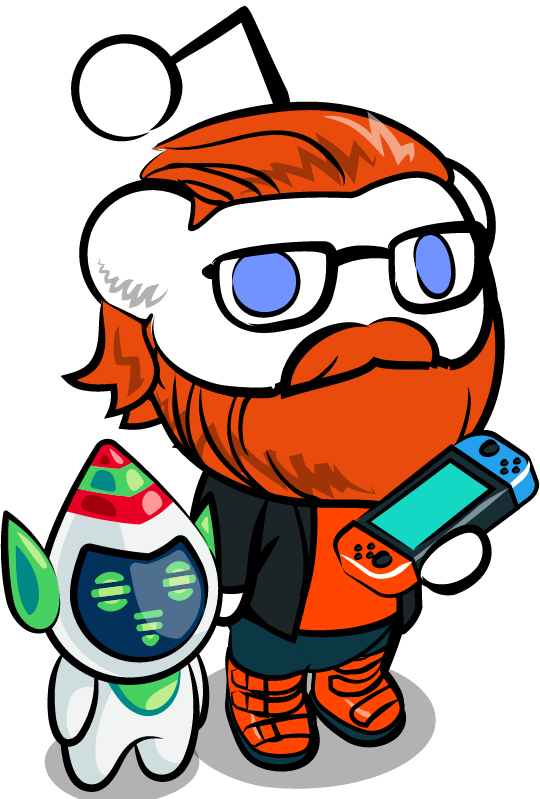Edit2: Writing this from Pop_Os! I had experience with Mint for my Self hosting rig and wanted to see other pastures. Decided to rearrange my three drives, two of them are still Windows, another I emptied and dedicated to Pop OS. That way I still have easy fallback to Windows if I need to do something fast and then I’ll know what I have to add to Linux over time.
First things first, I’ve setup auto-back up. For now it’s google drive because it’s the easy one. I have to figure how to self host Nextcloud and then use this as a backup storage.
Steam is installed and to be fair, I’m happy with the native linux games. Still going to take a look at Lutris and co out of curiosity.
I mostly miss MusicBee right now. Any recommendation for the most solid music player? Also, what’s a good movie player? I used MPV, I need something capable to deal with 3440x1440 resolution and stretch properly.
Also, I wanted to install Bitwarden and the first thing that showed up is Snap Store. I remember hearing about Canonical in a bad way so should I stay clear from that?
Hey!
Today is the day. I finally got fed up with Windows booting up with an advert that I already had yesterday and had clicked on “remind me in three days” reluctantly. I’m finally tired of killing Telemetry.
Now that gaming is less important for me, I feel like now is a good time to switch mainly to Linux. I might keep a small spare drive with a Windows/Steam partition for the occasional incompatible game.
I’ve just started transferring my precious files to an external drive and I’m preparing for my Exodus.
Still unsure about the distro I’ll choose, I would like to avoid distro hoping. But now I made up my mind, I’m leaving windows for the foreseable future.
I started self-hosting three months ago as a way to trialing Linux with the added bonus of being useful and my server is still up and alive so I’m confident I can use Linux without breaking it.
Any welcoming tips?
I’m a bit anxious about the big change, but also relieved I won’t have to put up with the bloat/adverts.
Edit: Two hours in and so many kind and useful comments. Thanks for the welcome party! You’re all a bunch of good humans :)
The major tip I always give is: Linux is different from Windows, this means things are done differently and if you try to do things the windows way you’re going to have a bad time.
As for distro hoping forget about this, you’ll experience it but it shouldn’t start for a while, pick something you’re comfortable with (maybe the same you use on your server) and a DE that looks good to you (personally I like KDE Plasma, but this is a very personal choice, and I don’t even use KDE but I’m not going to recommend i3 for someone who’s just starting now). Distro hoping will start whenever you see something that picks your interest on a different distro, and you decide to give it a try, but that should only come into place after you’re comfortable with the one you’re using. But I always also recommend keeping /home in a different partition just so it’s easier to switch or reinstall the system if needed.
I’ve had the desire to leave for a while, that’s why I thought creating a linux server to self host apps with my former gaming PC would be a great way to get started with Linux and learn the basics while still relying on Windows for my main stuff for a while.
Games were my last point of resistance, but I don’t play as much anymore so I think I should just take the plunge.
Can you elaborate the /home on a different partition part? How do you split your partition and does it mean you can switch distro and still have your stuff laying around as if you plugged an external disk?
Gaming is actually really good on Linux now. Proton is friggin amazing!
Putting all your files on one partition is fine and simple. The only downside is that if you go to install another distro, you’ll have to back up and restore those files after you wipe.
Welcome to greener pastures, it’s good to have you 🙂
That’s a nice comment. Thank you! :)
Gotta figure how to use my Quest2 on PC from Linux. I used Virtual Desktop on Windows but I couldn’t find documentation to use it on Linux.
For VR look into alvr
I personally keep /home on a completely separate drive; I have an NVMe SSD for / (root partition, where the OS is installed) and /home lives on a SATA SSD. There’s a page in the install process that lets you do this, create partitions on various devices, or select existing ones.
Having /home on a different partition means that you can swap out the root partition from around it to repair or replace the OS and you don’t have to move your files around. It makes the process of recovering from certain kinds of calamities and the process of distrohopping a lot faster.
Having them on a completely separate drive like mine does a couple things, the main one is it adds “drive failure” to the list of “certain kinds of calamities” I can quickly recover from. I can swap out a dead system drive for a new one, reinstall the OS in about 15 minutes, and then just run a little utility to reinstall all my software automatically. My files and settings are all still there.
Here’s the thing no one tells beginners: You’re familiar with hidden files on Windows? How you can right click a file and click “Hide” and it disappears from the list unless you go up to View > Show Hidden Files then it reappears and its icon is blurry? Linux has a similar system for hiding files. To hide a file in Linux, you put a period at the beginning of the file name. In a GUI file manager you can show them similarly to how you do it in Windows, in the terminal you ls -a (dash a for “all”). The Linux ecosystem uses this heavily for app config files. If you ever uninstall software, reinstall it, then notice your settings are still there…this is why. It’s stored in a hidden file somewhere in your /home directory, probably inside of ~/.config.
When I was a beginner, I specifically backed up my Documents, Downloads, Music, Videos etc. folders. And when I had to occasionally restore something from a backup, not only did I have to reinstall everything, but I had to reconfigure all my apps from scratch. Understanding the above paragraph, I backup or maintain my entire /home drive, and when I install a new OS all my settings are already there, including my preferred theme and wallpaper.
I’ll try to tell a shorter version of this story: My father bought his most recent computer, a Dell XPS tower. He got it set up, and the process of moving out of his old one and into his new one, just transferring files, installing software and configuring everything took him a solid two weeks of manual work. In that same time, I ordered the parts for my computer, waited for them to be shipped, assembled the machine, installed the OS on bare metal, restored a backup of my /home folder from my old computer, ran this utility which took a list of all the software I had on my laptop and then installed it all from the package manager automatically, and I was up and running. What he did in two weeks of hands-on work I did in three hours of mostly doing something else while the computer transferred data from an HDD or the internet.
TL;DR of the /home partition is this: One partition is gonna be the bootloader, typically a small /boot folder. This thing starts the booting process from efi, boot the kernel, this will mount the root partition (/). then, according to the File System TABle, typically a text file in /etc/fstab, you can mount whatever drives (and more!) Anywhere in the file system tree. A common setup is to partition your drive into a smallish / partition and a bigger /home partition. Under /home will be your /home/username folder, roughly the equivalent of C:\Users\username on windows, but even more of your install lives there now: any userspace application (usually a flatpak, which works crossdistro), ideally all user configuration, as well as of course your files. So, once you either need or want to switch distro, you leave the home partition untouched, format / and make a new user with the same username and home folder and bam, most if not all of your configuration and at least some of your apps will be there from the start You should probably do this, it’s not too complicated and it may save the ou a headache in the future.
On Windows you have drives C, D, etc, on Linux everything is inside the root folder (i.e.
/), and you can mount different partitions or even disks anywhere, so/can be the second partition on your M.2,/bootbe the first partition formatted as vfat,/homebe on an SSD and/home/nibodhika/hddbe an internal HDD. After you set it up (which you can do during most of the distros graphical installation) it will feel as if those are all just folders, but the important part is that if you ever format one of them the other remain intact. So for example if you have the setup I described above and you format and change your entire Linux distribution, that should only affect the M.2 disk, so the home and HDD are intact, which means that if you set the new distro to mount things in the same place you’ll have all of your configurations and media in place (all you need to do is reinstall the programs you use)
it’s hopping right? distro hoping is nice too
You’re probably right, I was in doubt and used the same spelling as OP, since english is my third language I don’t trust my spelling most of the time.
Any welcoming tips?
I recommend Linux Mint. It’s super user friendly, and there is a lot of support out there if you run into any issues.
Now that gaming is less important for me, I feel like now is a good time to switch mainly to Linux.
Eh, gaming works just fine on Linux. The main issues are with multiplayer games, so you can still probably play most of your single player games on Linux. Steam makes it really easy, and you can play Epic and GOG with Heroic Launcher.
But as for tips:
- keep a windows install as a dual boot, at least for the first few weeks, but set Linux as the default; if you can, use a separate drive for Linux; partitions work, but it’s easy to accidentally remove Linux’s boot loader when troubleshooting Windows problems
- don’t get fancy with your distro, just pick a popular one
- try to avoid the CLI; a lot of people will post commands to run, but if you don’t know what they’re doing, you can hose your system; instructions for GUI tools tend to be less problematic for newer users, at least from my experience
But the most important is to have fun! Solve one problem at a time, and enjoy your new system!
Welcome! I made the leap not long ago as well. I’m using Linux Mint, and I’ve had a great experience with it (including gaming).
My recommendation: when you get to installing games, use something like Lutris or PlayOnLinux. These are frontends (like Steam) that will help manage any special configurations you might need. They can even connect to online sources and apply settings that have worked for other people. I’ve been using Lutris and it’s been pretty good (I’ve been playing a lot of BG3 lately, runs like a dream).
Welcome and have fun!
Thanks for dropping those names, I’ll get Lutris and PoL :)
I’ve been crucified for mentioning this before. But Bottles is another alternative that allows easy configuration of Wine prefixes for gaming. It is another alternative worth considering, not better or worse, just different.
I used it for Overwatch before it was available on Steam, worked just fine for me!
Welcome to the family!
I’ve been using Linux for ~14 years and am not a computer person at all. Of all the distros, Linux Mint is by far the easiest, most intuitive, and works without problems. I think that the installation is even easier than Windows. There’s also a large supportive community in case you should into any problems, abd because it’s tailored for newer users, whatever problem you run into has likely already been resolved by someone else.
My personal favorite at the moment is KDE Neon tho.
So far I’ve tried Debian12 on my old laptop and Mint on my self hosting rig. I think I’ll sping so VMs and test new distros before commiting to a full install. I wasn’t too happy with Mint because its boot time is much slower than Debian on a comparatively better machine so I’m not too tempted to go for it again. But maybe I messed up something and caused slow boot times.
You could try MX Linux if you want something performant and stable. It’s built on top of Debian and is easier to use.
Yeah, Mint will tend to be a little slower than Debian since Mint is Debian plus Ubuntu plus Mint. If you’re looking for speed, LMDE or XFCE desktop environments would be the quickest. Of those 2, LMDE might be faster, but it’s almost a bare bones GUI. XFCE might be just a little slower, but the GUI will be more adjustable.
Good luck!! 😀
PlayOnLinux has been abandoned for years, stick to lutris, it also does far more for you thsn PoL
Start with something generic. Maybe not Ubuntu because of their recent hijinks. But something like Debian or Linux Mint. Just because it makes troubleshooting so much easier when because you can Google problems more easily.
Recent hijinks?
The snap crap has been going on for a while, but that doesn’t make it any better.
Mint is probably the best first distro currently, Debian feels “too stable” for desktop and you need to use flatpak a lot IMO.
Welcome to the Linux community!
Sounds like you’re about where I was at the beginning of my Linux journey. I was a Windows user from birth (well okay, my very first computer was dual-booted with OS/2) because that’s what computers came with, etc. I started playing with Raspberry Pis as a hobby, I learned a little Linux, and at the time you HAD to do a lot of stuff in Raspberry Pi OS through the terminal; it didn’t have a GUI package manager yet, so I learned some bash.
Then my laptop died, I got a new one, and Windows 8.1 was inflicted upon me. I decided to try desktop Linux.
I did decide to keep Windows 8.1 around because I still sorta knew how to use it and that’s where all the software I knew how to use ran, so I dual booted. I tried out a few distros in VirtualBox, and Linux Mint just felt like home and it’s been my preferred daily driver ever since.
It is a different system, you will have to get used to doing things a little differently and thinking in Linux’s terms. If you have something you NEED to do, and you’re struggling to figure it out in Linux, go ahead and boot into Windows, get it done, turn it in, then come back to Linux and without that time pressure see if you can figure it out now. Eventually you’ll stop booting to Windows.
As for gaming: Valve has done a lot for us. It’s amazing how good it is now. Used to be there was a list of games that did work on Linux, now it’s more efficient to make a list of games that don’t. Mainly competitive multiplayer games because of EAC. Some of the high end bells and whistles don’t work as well in Linux because they don’t get as much attention as Windows does, but I’ve spent a lot of time in some very good looking games made in Unity and Unreal.
I made a video going over my own experience. But I feel the biggest tip is to understand the difference between the OS and the Desktop Environment, since in Linux these are separate.
In Windows I found myself identifying the OS based on how the start menu looks and how the file explorer is.
But in Linux these are separate and are called Desktop Environmenta (DE). Your desktop can look like Windows with DE’s like KDE Plasma, Cinnamon, or Mate. It can be Mac like with KDE Plasma, or Gnome. Or it can be unique like Gnome.
If you noticed I repeated a few names, that’s because they can be customized, and some distributions make them look and feel the way they want them too.
Meanwhile the distro is more focused on what applications are pre-installed and what software will run and are available. I.e. Debain is more stable while arch is more up-to-date.
There are many guides going over this, but distro hopping is the best for narrowing this down. I found finding applications that need to work and seeing if the distro can do it, can weed out any distro that won’t work for you. If you don’t like the feel of a distro but like the functionally, then look for a similar distro but with a new GUI.
For example Ubuntu ships with a mostly unmodified Gnome. I personally am not a fan of Gnome and prefer a more Windows-like feel. So I look around and find Zorin, Kubuntu, and Mint.
Word of the wise though, while you can install more than one de on install, you are better off either making a new profile or not swapping your de. Something something shared resources, something something breaking your install.
Pick something basic like PopOs or Mint or whatever to start with. If youre trying to avoid distrohopping, install a virtual machine and test out distros with.
Avoiding any kind of distrohopping is kinda silly in the long term. You will want to find the distro that suits your needs best. By using a virtual machine, you can basically hop on the side, and keep a working system around til you find your goldilocks distro.
Ive been using linux for over 20 years. Ive daily driven several different distros for years at a time. If you stick with linux, you will most likely do the same.
First off, welcome to the club! You’ve taken your first step into a larger world :) I was a Windows user most of my life. Switched 100% about 4 years ago and I’ve never looked back.
Lots of good advice here, make sure Timeshift is set up. It can save you from accidentally borking your system lol.
As for Distros, my favorites for new users are Linux Mint, Fedora, and Pop_OS. I currently use Linux Mint with their Cinnamon desktop on my laptop and it works great. Cinnamon is similar to a cross between Windows XP and Windows 7 and feels very familiar to navigate for a long time Windows user.
My favorite desktop environment is KDE Plasma, because you can customize it like crazy.
Use the live image editions to test on USB like other people suggested, it will save you lots of time deciding which distro and desktop environment to choose.
Best of luck!
You can trial several distros, desktop environments, etc. on Live boot USB first, no need to rush that decision. But for no hassle configuration and day one 100% productivity, Mint or EndeavorOS. You won’t look back.
Keep your home in a separate disk altogether, or at least a different partition.
Configure Timeshift or another system backup tool as soon as possible, because as a noob you will want to do things that might inadvertently break your system.
Ignore fanboys, distro warriors and zealots in general. The magic of Linux is that it is whatever you want to make of it.
Timeshift is so important, it’s saved my butt several times.
I wish I had known about it when I first jumped into Linux.
I will be completely honest with you, I have read and watched hundreds of distro recommendations, and the only one that doesn’t suck is this one: https://reggie.re/blog/20230625-actually-good-distro-recomendations-for-beginners.html
The article also contains some useful tips here and there like: “Software Stores are actually useful on Linux so use them”
Welcome, I was very excited to make a full switch and ditch windows from my life 2 years ago, It makes me love to use my PC again. First, distro, I suggest 2 Mint and EndevourOS, I suggest this two because they are community driven with a great user base and are very user-friendly.
Why Mint? Mint has specific versions, you will update similarly to windows from time to time, you sometimes will not have the latest version of a package but is not that stale as a distro like Debian that aims for maximum stability and is sometimes too old for some normal desktop stuff.
Why endevourOS? EndevourOS is probably the well-rounded, user-friendly rolling release distro out there, you will always have the latest versions of your packages. It is based on arch, that is the fact the best rolling release distro, but have a more normal installation, Arch is just unbearable to install for any non-experienced user, you have to learn so many things that I feel is a waste of time of a new user that want to touch the buttons, but I do recommend to you if you want to understand your system in the future.
Now about the desktop environment, I suggest you take some time choosing and even hoping between them, it would be your daily workflow, and it is more important than distro. Here is a great video talking about the major ones, you can have multiple DEs at the same time, if you install a new DE you can switch between them in your login screen, do not be afraid to test.
About games:
If you use steam, always check games compatibility here. It is a community resource to talk about how you run your games.
If you use GoG or Epic, Heroic is a great launcher that aggregates both.
About wine, wine is a program that translate windows programs to linux, every non-native game on linux run through wine (even valve proton is just a product on top of wine with some additional sauce). Wine has the concept of wineprefix that is the folder that contains your Windows driver (C: disk and configuration about this wineprefix), if you just run a program with wine it will default to the folder ~/.wine on your personal desktop. I took some time to get it, and I believe it would have helped me to understand earlier.
Both steam and heroic uses different wineprefixes to manage your games, but if your game is not from these 3 stores? (you can manage it by hand but… you know, I’m lazy)
There is Lutris, Lutris help you to manage games in different wineprefixes and have an amazing interface to configure a lot of stuff, there is also a repository of installer scripts that you can click and run, I feel lutris a little more complicated cause usually I had to do tinkering (older scripts and things like that). You can also install your games directly or even other programs if you want to keep your wineprefixes organized.
Have a great journey.
Idk if I would suggest Endeavour to a first time user. In my experience it has been perfectly stable and simple, except for some random boot time kernel panics, but the potential for an inexperienced user to break an install without at least some core concepts of a package manager, especially with the AUR, is certainly there.
My example is just me, but I started with Ubuntu 10 years ago, and I broke that shit all the time. I had a not so good internet connection and half of the issues were related to dpkg not committing the installation.
I also think that AUR have the opposite effect comparing with PPAs, that I found much more error prone.
~2010 is when I gave up on dual booting and went 100% Linux. TBF I had mostly been on Linux many years before but just kept Windows “in case I needed it”
It’s a great time to take that leap, it’s getting better everyday too. The ONLY thing I wish I had was Office, but webapps and things like OnlyOffice work just as well if not better.
Posting to say thank you to all the helpful replies here. Just skimming I see so many good resource links and tips. I am about to do the same thing OP is doing since I decided Windows 10 is the last release I’ll be using as my main PC, for many of the same reasons as OP. I have some linux server experience but have never used it as my primary desktop PC. But I am too tired of the telemetry blocking game to keep putting up with Microsoft’s bullshit. I’ll have a Windows 11 partition for gaming with things that don’t work on linux, but Microsoft can kiss access to any of my non-videogame data goodbye.
It’s a sign of the times that so many helpful replies are here instead of 10-15 years ago where mostly you’d get “RTFM” responses. Thank you everyone for sharing your experiences.
In the last few months I switched from years of arch to opensuse to bazzite. I got sick of updating everything all the time. Bazzite (also kinoite, ublue, silver blue, etc.) does everything with just a brief notification and is active next boot. Primary app install via flatpak, appimage, also fedora repos and rpm packages via rpm-ostree. And nix which I haven’t delved into yet.
The only things I’m not sure about are the driver’s for my brother laser printer, and undervolting requires turning off secureboot or a patch which may be too involved for me with this distro.
the driver’s for my brother laser printer
I have a Brother printer + scanner too (MFC-L2750DW). Many Brother printers (and a lot of non-Brother printers too) are supported by default in Fedora using a “driverless” method. It’s part of “IPP Everywhere” (https://www.pwg.org/ipp/everywhere.html), AirPrint (Apple), and Direct Print (Microsoft), and most printers support it these days, and Fedora supports all of these. (Other distros likely do too.)
At least in GNOME (on Silverblue here), if it doesn’t already show up and work, you can click on “Add Printer…” and it should find and add it. KDE and other desktops will likely be different — although hopefully not much different.
Scanning with “Document Scanner”, aka: “Simple-Scan”, detects my networked Brother printer for scanning without having to do anything too. https://flathub.org/apps/org.gnome.SimpleScan
I hope this helps!
undervolting requires turning off secureboot or a patch
I haven’t looked into undervolting much. I know some people have mentioned CoreCtrl; I haven’t managed to figure it out yet.
If it requires turning off secureboot or a patch, that’s a bummer and might be why I couldn’t find the settings in CoreCtrl. I haven’t seen this when looking it up a while back, however (but the Internet is big). CoreCtrl setup docs @ https://gitlab.com/corectrl/corectrl/-/wikis/Setup don’t mention either.
I do see that it requires setting a kernel flag, which on ostree-based distributions is:
rpm-ostree kargs --append=amdgpu.ppfeaturemask=0xffffffff(And then reboot.)
I didn’t know about driverless printing. If it works out I’ll switch my parents over too since the lower maintenance updating is great and printer is the only thing they need that I wasn’t sure about.
The undervolting thing is on an old Intel, I think haswell. A lenovo t440p with the standard fare mod pack. I forgot what it was called but there was some procedure involving mok installation and signing the module that allows voltage control, and/or patch to bypass some aspect of it. I was only reading up on it before I switched distros to bazzite after liking it on steam deck and now it looks like I might have to make a custom ublue image to achieve this if I understand correctly. I’ll probably just switch to seabios and do away with the uefi entirely though as tianocore doesn’t have a bios settings menu but one can be added as a payload when using seabios.
Here are some tips from somebody who made the switch about a year ago. My advice is to take it slow.
I first tried Linux on an old laptop that nobody was using anymore. I messed around with it, did a coding project, tried to see what it was like to get this and that running. It’s good that you tried Linux with a home server first. That means you’re already decently comfortable with it.
I recommend starting with a dual boot setup. Some time later I got a new PC, and I was planning to run Linux on it. It came with Windows 11. I wasn’t comfortable with going full Linux, so I split the 512GB SSD down the middle and gave most of the 2TB hard drive to Linux. This has served me very well. It gave me peace of mind to know that if there was something I really needed that I couldn’t get working on Linux, I could boot into Windows.
After a bit, I defected back to Windows. It ended up being somewhat bad timing. I wanted to play Sonic Frontiers, but it barely worked on Linux. At the time I was also using the game engine Unity, which was what my game design courses were teaching me, and I couldn’t get it working properly on Linux for the life of me. I kept my Linux partition in case I ever wanted to use it for something or even switch back. This is partially why I recommend a dual boot setup. You might be dissatisfied with Linux the first time you try it, and if you end up really wanting to go back to Windows, you’ll be glad that you left yourself an easy way back.
Well, I’m glad I left my Linux partition on there, because I eventually came back and stayed here. I was over Frontiers, and I finally managed to get Unity working, so there I stayed. As I spend more time with Linux, I get more and more comfortable with it. I only ever boot into Windows to play multiplayer games with my friend since I don’t want to waste time troubleshooting a game for an hour during a call if something doesn’t work. Though I suspect that most of what we play would work fine on Linux! I’m starting to feel like I’m getting comfortable enough with Linux that if I wanted to get rid of my dual boot, I could. It helps that Unity destroyed itself so I don’t want to use it anymore anyway. Moral of the story: Don’t feel like you have to fully commit to Linux at first. You can make the transition slowly and do what makes you comfortable, and you’ll get there eventually.
I know this comment is very long, but I want a paragraph to recommend distros. I highly recommend something Debian based for a new user. It’s relatively easy to learn compared to other kinds of distros and more stable. I recommend either Linux Mint or Pop!_OS, both of which are excellent for beginners. They’re both based on Ubuntu, which itself is based on Debian. They’re pretty similar under the hood, so it mostly comes down to which UI you prefer. I believe that Pop!_OS is a little more up-to-date with some packages, but not everyone likes its UI, and its app store is somewhat miserable. I use Pop and I adore it, but it’s not everybody’s cup of tea. If you want to try a few distros before you commit, I recommend trying them on some old device you don’t use anymore, or a virtual machine.










